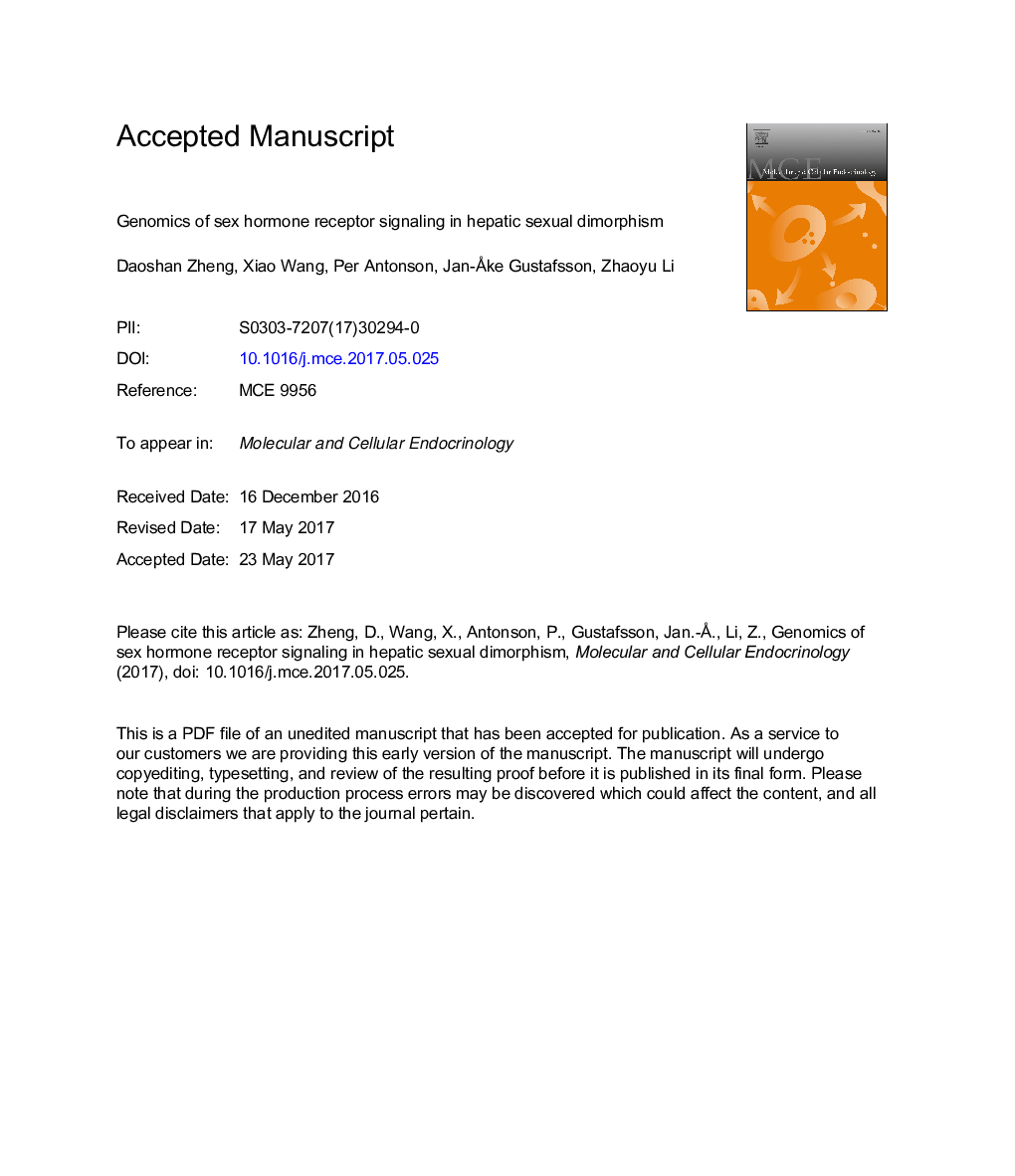| Article ID | Journal | Published Year | Pages | File Type |
|---|---|---|---|---|
| 8476366 | Molecular and Cellular Endocrinology | 2018 | 20 Pages |
Abstract
The liver plays a crucial role in a variety of physiological processes. Sexual dimorphism is markedly defined in liver disorders, such as fatty liver diseases and liver cancer, but barely addressed in the normal liver. Distinct sex hormone signaling between male and female livers is the major driving factor for hepatic sexual dimorphism. Over 6000 genes are differently expressed between male and female livers in mice. Here we address how sex hormone receptors, estrogen receptor alpha (ERα) and androgen receptor (AR), mediate sexually dimorphic gene expression in mouse livers. We identified 5192 ERα target genes and 4154 AR target genes using ChIP-Seq. Using liver-specific ERα or AR knockout mice, we further identified direct and functional target genes of ERα (123 genes) and AR (151 genes) that contribute to hepatic sexual dimorphism. We also found that the most significant sexually dimorphic gene expression was initiated at birth by comparing hepatic gene expression data from the embryonic stage E10.5 to the postnatal stage P60 during liver development. Overall, our study indicates that sex hormone receptor signaling drives sexual dimorphism of hepatic gene expression throughout liver development.
Related Topics
Life Sciences
Biochemistry, Genetics and Molecular Biology
Cell Biology
Authors
Daoshan Zheng, Xiao Wang, Per Antonson, Jan-Ã
ke Gustafsson, Zhaoyu Li,
